Reservoir Engineering Staff

|
Kishore K. Mohanty, Program Manager mohanty@mail.utexas.edu Dr. Mohanty's research focuses on transport of simple and complex fluids in complex microstructured materials for applications in energy, environment and biotechnology. Many naturally occurring materials such as sandstones, carbonates, aquifers, human bones and tissues are microstructured. Many fluids used in these systems are nanostructured. This research is aimed at imaging these structures, understanding the physics of transport, relating the microstructures to transport coefficients and developing new materials for enhanced targeted transport. |
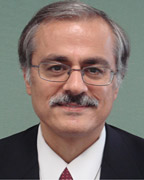
|
Maghsood Abbaszadeh abbaszadeh@mail.utexas.edu Dr. Maghsood Abbaszadeh received a B.Sc. degree in Chemical Engineering in 1978, M.Sc. in Petroleum Engineering in 1979 and Ph.D. in Petroleum Engineering in 1982 from Stanford University. He is currently the technology director of Innovative Petrotech Solutions. His research interests include multidisciplinary integrated reservoir management, stochastic reservoir characterization and uncertainty analysis, reservoir simulation for field development, IOR/EOR methods and applications, tracer flow and well test analysis. He has recently joined the CPGE research staff as a Senior Research Fellow to participate in several research projects related to his areas of expertise. He has taught Advanced Reservoir Engineering as an Adjunct Professor in the Department of Petroleum and Geosystems Engineering and participated in several research projects over the past 10 years. |

|
Matthew Balhoff balhoff@mail.utexas.edu Prof. Balhoff's research interests include pore-scale and multiscale modeling; flow and transport in porous media. |

|
Steven L. Bryant steven_bryant@mail.utexas.edu Dr. Bryant's interests include multiscale modeling of reservoir processes, using parallel computing to address large-scale subsurface flow and transport applications, and the engineering aspects of microbial enhanced oil recovery. He is also interested in applying techniques for predicting reservoir quality to inform methods of reservoir characterization. |
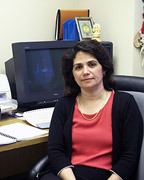
|
Mojdeh Delshad delshad@mail.utexas.edu Dr. Mojdeh Delshad, an Associate Research Professor, earned her Ph.D. and M.S. degrees from The University of Texas at Austin both in Petroleum Engineering and a BS degree from Aryamehr University in Iran in Chemical Engineering. She has 18 years of experience in modeling multiphase flow, property modeling, and reservoir simulation and more than 10 years of experience in modeling and designing subsurface contaminant transport and remediation processes. She has been involved in the design of several tracer and surfactant and surfactant/foam field tests using UTCHEM flow and transport numerical model. She is in charge of UTCHEM development and user support. |
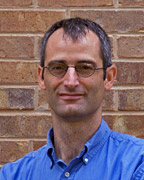
|
David DiCarlo dicarlo@mail.utexas.edu Prof. DiCarlo's research interests include using advanced experimental techniques such as multi-energy CT scanning, synchrotron radiation, and acoustical measurements. These techniques are used to connect the laboratory scale to the pore scale and reservoir scale on topics such as three-phase, compositional, fracture, and preferential flow in the subsurface. |
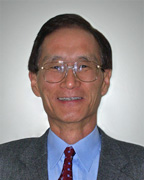
|
Chun Huh chunhuh@mail.utexas.edu Prof. Huh's research interests include process modeling for various enhanced oil recovery processes, such as surfactant/microemulsion flooding, polymer flooding, miscible and near-miscible gas injection processes, use of foam to improve effectiveness of chemical and gas injection processes, and heavy oil recovery from unconsolidated sands. Having previously worked in a major oil industry research laboratory tackling various oil recovery problems, Prof. Huh's main focus has been improvement of the EOR model features that require modification from actual field application of those processes, and the adaptation of those improvements for reservoir simulators for improved field performance. |

|
Larry W. Lake larry_lake@mail.utexas.edu Professor Lake's interests include enhanced oil recovery, reservoir engineering, reservoir characterization, geochemical modeling, and simulation. |
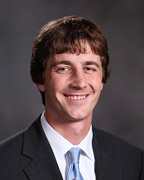
|
Mark McClure mcclure@austin.utexas.edu Dr. McClure's research is focused on modeling and characterization in three complementary areas: hydraulic stimulation of shale gas reservoirs, hydraulic stimulation of geothermal reservoirs, and induced seismicity. He develops unique modeling tools designed to better describe the physical processes taking place during these complex processes. Objectives: to develop better physical understanding of fundamental processes, to develop improved modeling techniques and tools, to develop improved methodologies for determining induced seismicity hazard, and to develop practical techniques that could be used in the field to improve economic performance and mitigate risk. |

|
Quoc P. Nguyen quoc_p_nguyen@mail.utexas.edu Dr. Quoc Nguyen's recent research has focused on the interface between colloid science and the engineering of complex fluids, such as foam, nanoparticle dispersion, emulsion, surfactant and polymeric solutions. His parallel program of modeling and experimentation has been aimed at understanding subsurface transport phenomena (including dynamics of colloids and complex fluids in porous media, reactive flow, and heat transfer), and developing optimum control methods for subsurface processes. His research has applications in enhanced oil recovery (EOR), conformance control technology, hydrocarbon production stimulation, in-situ thermal and chemical conversion of tar sand and oil shale, and nano-sensing. In previous research in the downstream petroleum industry, he led several projects on oil refining (distillation and extraction) and petrochemical (cracking and reforming) processes. In the environmental area, Nguyen was involved in numerous industrial research projects on hazardous waste treatment and the development of clean production technologies. His current research projects are in the areas of chemical and gas flooding for EOR; conformance control with complex fluids; production stimulation of unconventional resources; thermal and chemical conversion of tar sand and oil shale; engineering of nanoparticles. |
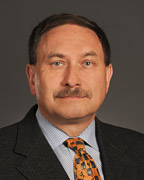
|
Tadeusz W. Patzek patzek@mail.utexas.edu Dr. Patzek's research involves mathematical modeling of earth systems with emphasis on multiphase fluid flow physics and rock mechanics. He is also working on smart, process-based control of very large waterfloods in unconventional, low-permeability formations, and on the mechanics of hydrate-bearing sediments. In a broader context, he works on the thermodynamics and ecology of human survival and energy supply schemes for humanity. |

|
Gary A. Pope gpope@mail.utexas.edu Dr. Pope's research interests include enhanced oil recovery, the use of tracers for reservoir characterization and numerical reservoir simulation. His research on enhanced oil recovery over the past 32 years has included work on chemical flooding, polymer flooding, miscible flooding, steam flooding and in-situ combustion. The emphasis in this research is on the experimental investigation of how phase behavior, fluid properties and rock/fluid interactions affect these enhanced oil recovery processes and how to model these phenomena as well as how to use simulators to optimize, scale up and predict performance. Current research includes the development of a next generation chemical flooding simulator, the use of partitioning tracers for integrated reservoir characterization, the remediation of gas-condensate wells to improve productivity, three-phase relative permeability models, and the development of high-performance surfactants for enhanced oil recovery. |
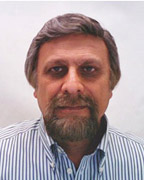
|
Kamy Sepehrnoori kamys@mail.utexas.edu Professor Sepehrnoori is Project Director for the Joint Industry Project for Reservoir Simulation in the Center for Petroleum and Geosystems Engineering. His research and teaching primarily focus on computational methods. Presently, his research projects include development of a general purpose reservoir simulator for massively parallel computers and clusters of personal computers, distributed computing for reservoir simulation, simulation of enhanced oil recovery processes and modeling and simulation of naturally fractured reservoirs. |

|
Carlos Torres-Verdin cverdin@mail.utexas.edu Dr. Torres-Verdin's interest include: (a) borehole geophysics, (b) formation evaluation,(c) well logging, (d) integrated approaches to the interpretation of well-log measurementsand core data, including micro- and macro-scale physics, (e) nuclear magnetic resonance phenomena in porous media, (d) near-borehole phenomena, (e) Integration of well logs with time records of fluid production measurements, (f) integration of well logs with 3D seismic data and vertical seismic profiling, (g) integrated reservoir characterization, especially integration of 3D seismic data with well logs, core data, and time records of fluid production measurements, (h) in-situ permanent sensors, (i) automatic feedback control of hydrocarbon reservoir production, (j) numerical simulation of electromagnetic, elastic, and fluid-flow phenomena in porous media, (k) Inverse theory and nonlinear optimization, (l) signal and image processing, and (m) stochastic modeling and control. Dr. Torres-Verdin is director of a joint industry research consortium on the subject of formation evaluation. His research focus is on multi-disciplinary interpretation of rock physics measurement into multi-phase petrophysical variables. Dr. Torres-Verdin has published extensively in the areas of subsurface geophysics, inverse theory, and numerical simulation. Please see Dr. Torres-Verdin's personal web page for more information. |
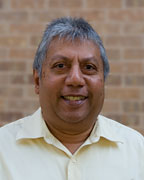
|
Upali P. Weerasooriya upali@mail.utexas.edu Dr. Upali Weerasooriya, Director of Surfactant Development, earned his PhD from The University of Texas, MS from Bowling Green State University, and BSc (Honors) from the University of Sri Lanka, all in Chemistry. Upali has 27 years of surfactant industry experience, his last position being as Vice President and Chief Technology Officer of Harcros Chemical Company. In recognition of his surfactant expertise, he was awarded two prestigious industry awards, the Rosen Award (1999 for Best Scientist) and the SDA (1998 for Best Publication), in addition to 13 U.S. patents. Upali has commercialized several new surfactant processes. His research interests are in design, evaluation, and synthesis of surfactants. Upali pays special attention to commercial feasibility of new surfactant systems. |

|
Mary F. Wheeler mfw@ices.utexas.edu Dr. Wheeler's major research interests are the formulations and analysis of parallel algorithms for modeling multiphase, multicomponent flow and transport in porous media, including derivation of a posteriori error estimators. Under her direction, the Center for Subsurface Modeling at UT has developed the IPARS (Integrated Parallel Accurate Reservior Simulator) framework. This software has been extensively tested and has been shown to be comparable to existing industrial simulators. IPARS currently contains the following models: sequential and implicit (oil-water) two-phase; implicit black-oil (three phase, three component); two phase (air-water) implicit; explicit and implicit single phase; equation of state compositional; black-oil coupled to geomechanics and reactive transport coupled to multiphase flow models. An attractive feature of IPARS is that it allows for the coupling of different models in different subdomains and supports message passing parallel computations on structured multi-block meshes in two and three spatial dimensions. |
